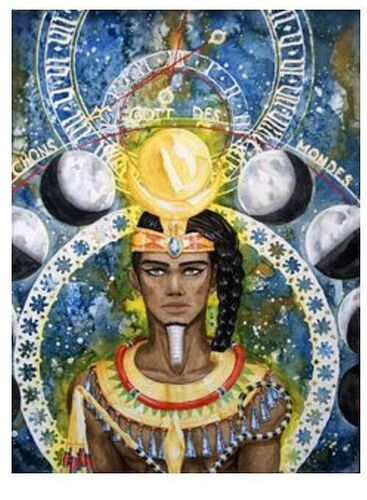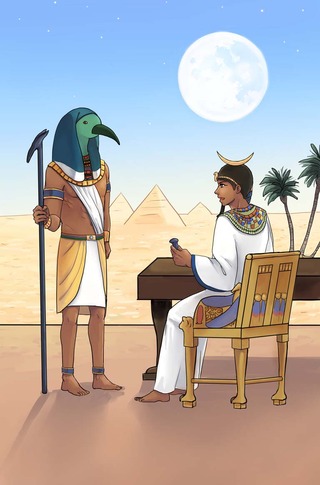[details=““A Game of Senet, Illustrations””]
[/details]“Thoth wagered secret knowledge, Khonsu wagered a portion of his light. The game went on for many hours, each god being an equally skilled player of Senet.”
" I wouldn’t trust the face of Khonsu in a game though lol, he is the god of all phases and it’s many faces afterall"
Some primer impressions shared in correspondences, mixed with some phrases and traces;
“I really like Khonsu lunar energy!
By the way, when I close my eyes - I can clearly see my spine, the whole channel, and the jets of energy - cobra effect (I don’t know what they’re doing exactly yet - exploring spinal health, lol)”“I’m sure the Djed (which Khonsu holds) comes into play here. It’s a very important symbol[…] It is the transformed and raised spine of Osiris, of his royal dignity and excellence.” (etc etc)
Here, Wadjet is depicted posed on the raised djed (pillars)
More Depictions on the Djed Pillar
Khonsu holding the djed-staff (with an emerging was-symbol)
“Also, I did a crossing meditation, where I connected left foot with right hip, then right hip with left shoulder (as depicted). And vice-versa… This was a powerful chthonic connection, very intense vibrations, energies from beneath where pulled up to the upper bodies energy centers and then crossed across the eating heart.”
Marvel-Khonsu: Powers and Abilities (shared in the project-thread)
Powers and Abilities
Powers
Khonshu has the conventional powers of the Ennead (the Heliopolitan gods), such as:
- Superhuman Strength: Khonshu can lift (press) 60 tons.
- Superhuman Durability: Khonshu possesses superhuman durability that allows him to withstand unspecified levels of injury.
- Regenerative Healing Factor: Despite his god-like durability, it is possible to injure Khonshu, but any damaged tissue heals much faster and better than even the healthiest human.
- Immortality: He is extremely long-lived and is immune to disease and aging.
- Magic Manipulation: Khonshu can manipulate mystic energies for supernatural effects such as interdimensional teleportation, telepathy, healing the injured, resurrection, earthquakes and to grant superhuman powers to mortal beings such as the Moon Knight
- Lunakinesis: Khonshu was seemingly able to manipulate objects made out of moonrocks (including Uru)
- Power Absorption: Khonshu was able to steal the powers of various heroes and store them inside some Ankhs.
More info on Marvel’s Khonsu:
Khonshu (Earth-616) | Marvel Database | Fandom
That Royal Cobra posing over his chest and on his belt…







